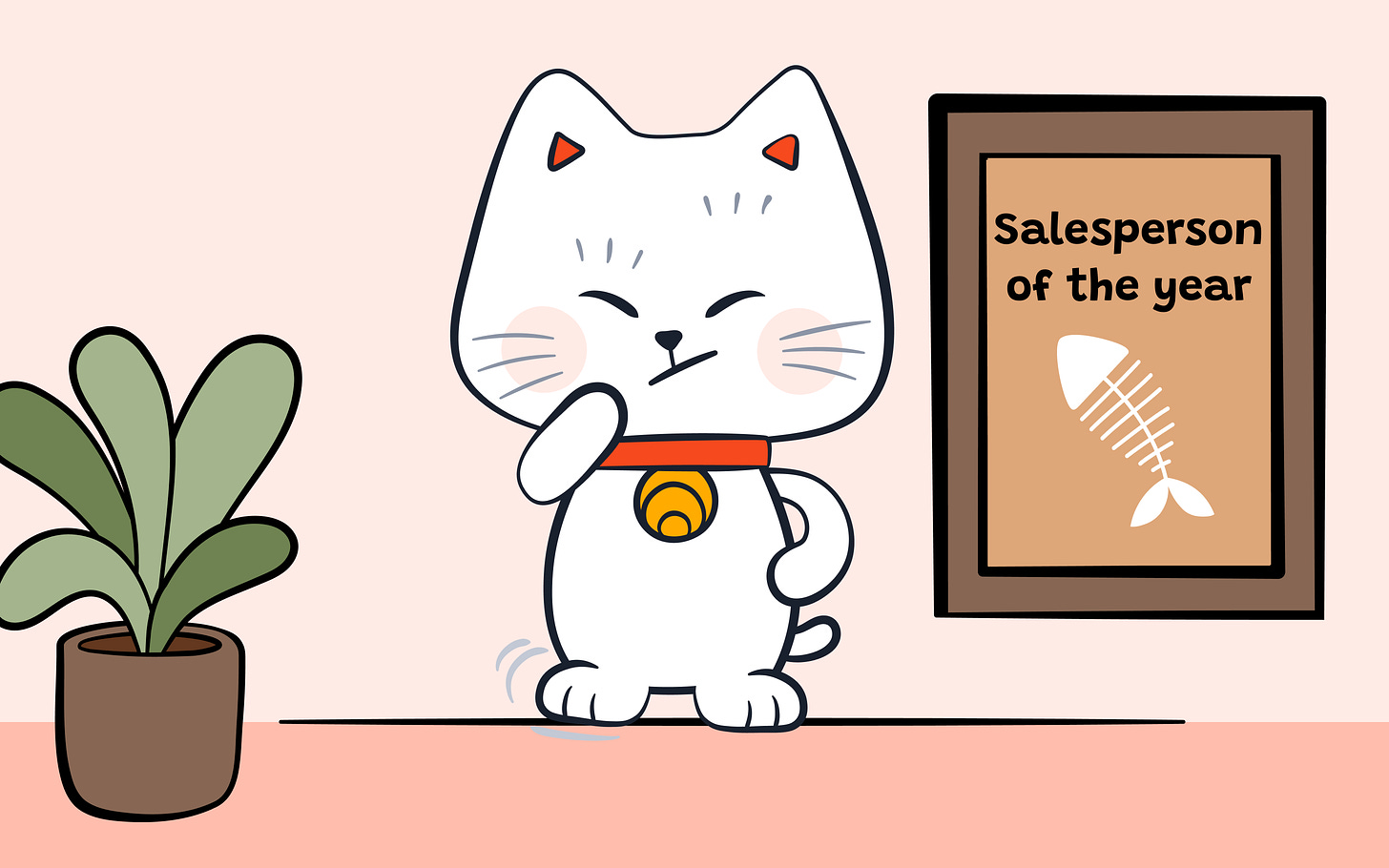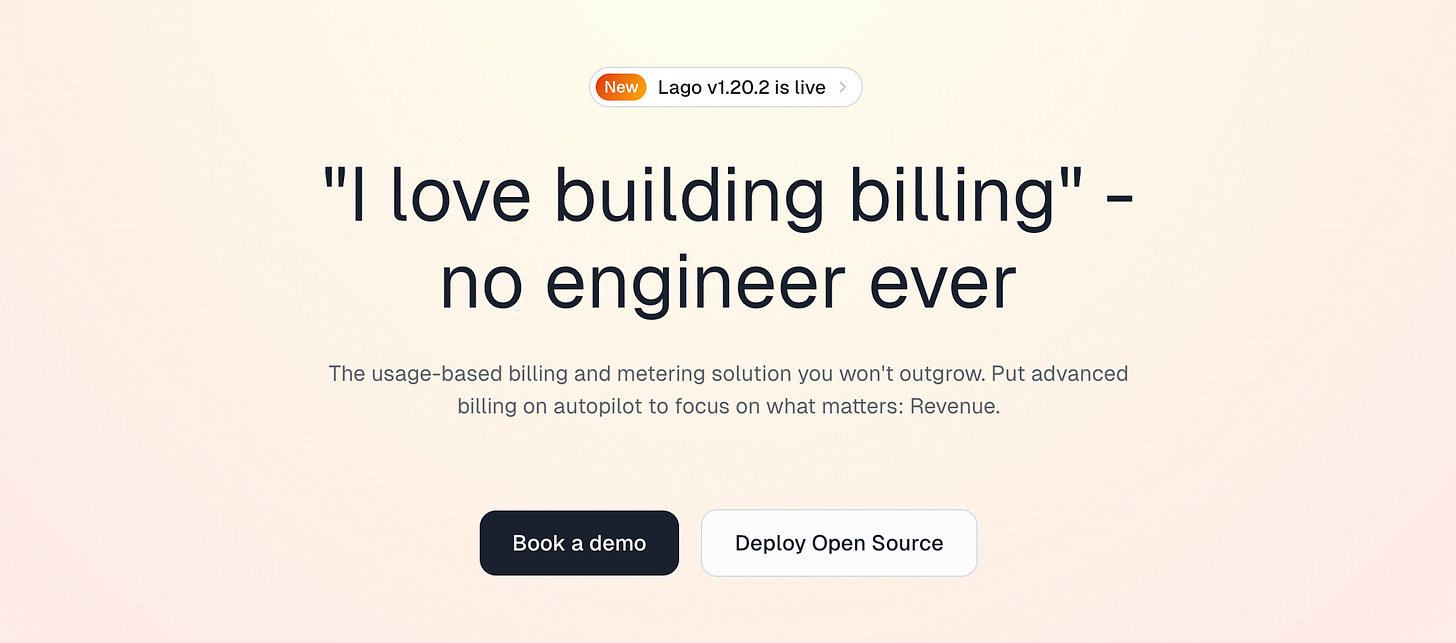Stop self-serve, start selling
Why (and when) startups shouldn't do self-serve
“A good product should sell itself” is the first commandment of the cult of product-led. The Lean Startup is its holy scripture, Sean Ellis its high priest. “Book a demo” and “talk to sales” are mortal sins. The day you hire a salesperson, the priesthood excommunicates you.
The freemium/free plan cult claims that in the future, all software will be self-serve and anyone who requires a demo to buy is behind the times.
At Lago, we’re heathens. We require a demo before you can pay us. A scheduled call with a human being. And it’s been great so far. We’d be worse off it we were self-serve.
Today, I want to dive in why we’re committing this sacrilege and why you should consider abandoning freemium.
(and we’re not alone, see Equals’ bumpy freemium saga)
We’re early-stage (ish)
The earlier your startup’s stage, the more qualitative the feedback you need.
Dashboards only show you a session starting and ending after 72 seconds. You never discover what objection or question made them leave. On a sales call, they’ll ask you, which helps update your messaging.
Same for the reverse. If a phrase of your pitch consistently “clicks”, you know to keep it. That fidelity of information doesn’t come through in analytics—especially when you’re early-stage and don’t get much traffic.
As a rule of thumb: The more early-stage you are, the more you should talk to users/customers.
But it’s not just stage—customization also matters.
The more custom your product, the more you need sales
Lago simplifies building your monetization/billing engine, you still need to assemble the Lago bricks (sorry) in a unique way and integrate them with your product—aka customization.
The more customization a product requires, the more the user benefits from human help from a knowledgeable salesperson. The word knowledgeable is important here. The stereotypical base-touching, back-circling, quick-call-hopping salesperson doesn’t work well for selling technical products like Lago.
Our sales motion looks different:
We send prospects to competitors if they’re not a fit, e.g. they want simple seat-based subscription billing. Lago would be overkill.
Our salespeople are technical and understand the product. They “speak the same language” as the engineers they sell to.
We’re selective about outbound. Billing is a rare project, so Lago is irrelevant for most people, most of the time, which means we only reach out after strong signals.
This last point is an important, underrated aspect.
Understand how your product is bought
Too many founders don’t understand how customers buy their category.
Do customers stumble upon it and sign up for a trial (like Loom)? Are they working on a big project that requires buy-in from 5 teams?
Those two ways of buying something require different ways of going to market.
Loom is the perfect freemium product. It’s inherently viral (the point is to send the video to someone else), time to value is short (a few minutes) and it’s a low-risk product (your customers aren’t impacted by Loom videos not working).
This is why Loom is perfect for a self-serve motion. A product like Lago is the exact opposite:
Long time to value: It can take weeks or months until a billing system is in prod.
Replacing your billing system is always a big, intentional project, not something you stumble into.
If your billing system messes up, it seriously affects your business and customers.
The PLG cult loves to say “nobody wants yet another meeting”. But that doesn’t matter if buying your product requires dozens of internal meetings anyway.
And our final rule of thumb: The more you charge, the bigger your customers, the more necessary sales is.
(Ticket and org) size matters
Everyone can charge $10/month to a credit card. $120k enterprise deals go through wire transfers and order forms.
The bigger your target customer and the more you charge them, the more questions they’ll have. Enterprise buyers might require control of which cloud their data is hosted in, Okta SSO, integration with Salesforce and role-based access control. Only a vendor that checks all of those boxes will suffice. In general, an enterprise buyer’s requirements are so complex that no amount of landing page copy would answer all of the questions they have.
That’s why even product-led champions like Slack, Miro, Loom, etc. now have legions of salespeople.
For Lago, this is especially true. The complex billing use cases we support skew towards later-stage companies. Most (not all) earlier-stage companies aren’t worried about the finder details of monetization. They’re worried about finding product-market fit.
We know this, so we started to rely on sales early. Of course, none of this is written in stone.
Should we offer self-serve?
In the beginning of this newsletter, I described that PLG can be cultish. And we’re not consumed by the dogma of sales. There are real arguments for offering self-serve.
First, our open-source version acts as a type of freemium. Would some open-source users pay us if it didn’t require a call? Demos mean friction, which means missing out on customers—no way around it. That’s especially true because OSS users have already done the hard part of customizing and integrating.
Second, one of our core positioning pillars is that we don’t charge a cut of revenue, which our competitors do. There are probably quite a few companies that would pay just to not be charged a revenue cut.
Third, others have done it. PostHog builds relatively complex tools for engineers and focuses on self-serve. And it works for them!
But the biggest reason we haven’t done self-serve (yet) is focus. It’s easy enough to launch a simple self-serve plan. But the ongoing effort of supporting those customers, optimizing for free-to-paid conversion and so on would be distracting.
If you’ve read up until this point, do you think we should? Please write a comment and tell us why we should/shouldn’t launch self-serve.



